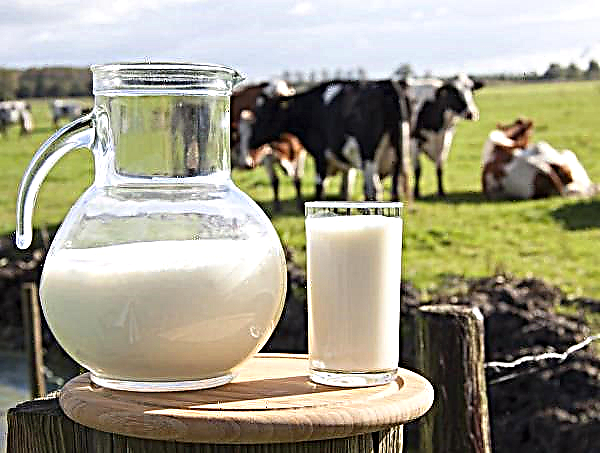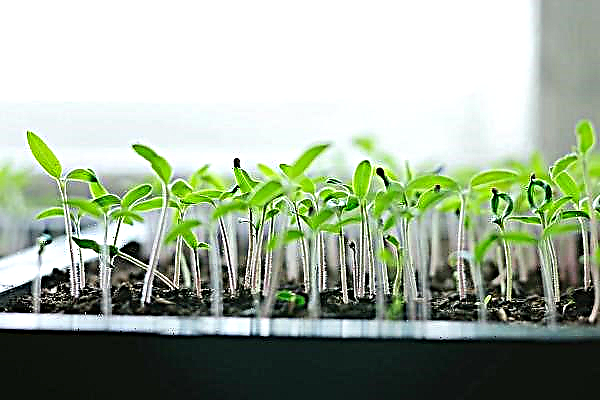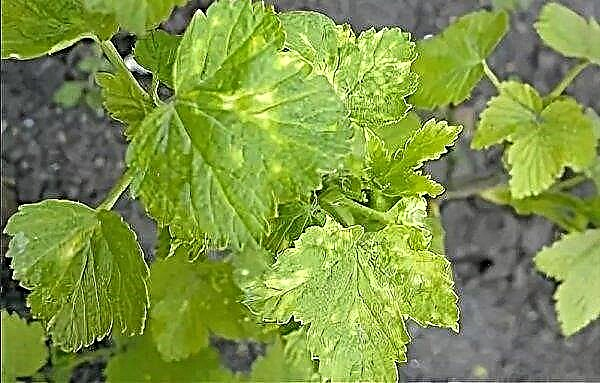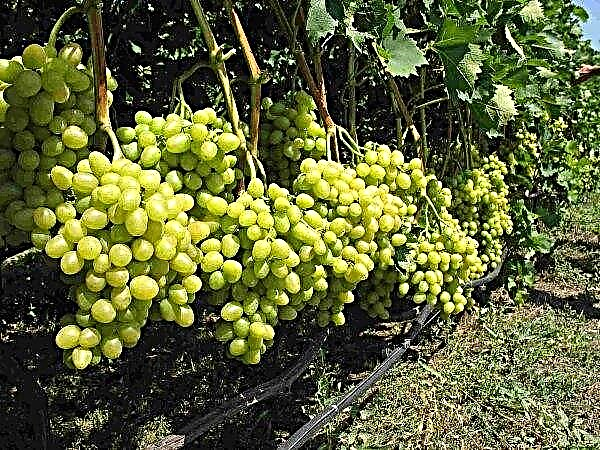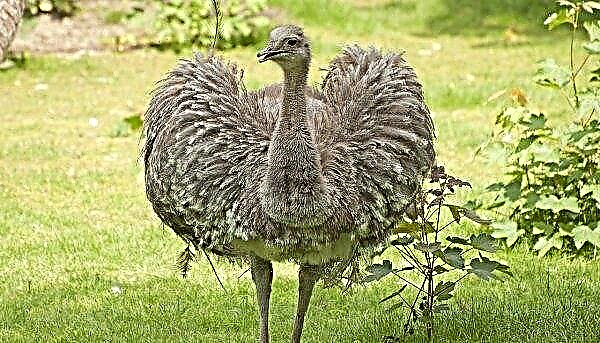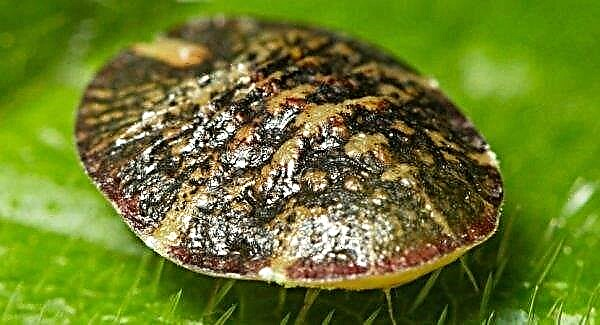Hybrid cabbage varieties have long been deservedly popular, among them Megaton. This variety is loved not only for good yield and disease resistance, but also for taste. This article will help you figure out what Megaton cabbage is loved for, the technology of its cultivation, and also you will find out if it can be fermented.
Description and characteristic
The author of the variety is Bejo Zaden from the Netherlands, which is engaged in breeding seed plants and improving seeds. Megaton F1 passed the test on the territory of Russia and since 1996 it is registered in the State Register of selection achievements approved for use.
This hybrid is characterized by such indicators:
- Belongs to the white-headed species, the cabbage family (until recently - cruciferous).
- The root system is highly developed.
- Strongly leafy, leaves are gray-green, slightly wrinkled.
- Heads of cabbage are round, flattened, dense, inside is white, light green on the outside, juicy, palatability is excellent, average weight is 4–8 kg, maximum is 15 kg. Inside, the stump is short.
- Resistant to lack of moisture, can be grown in greenhouses, in open areas, through seedlings or seeds.
- Planting density - 20–35 thousand units per 1 ha.
- Ripening period is medium late, 100–102 days.
- It can be stored up to 4 months, does not lose its presentation during transportation.
- Productivity reaches 900 kg / ha, in some regions over 1000 kg / ha.
- High resistance to diseases.
- Can be consumed fresh, fermented, salted, used in home cooking.
Important! Megaton is not grown in the Republic of Mordovia and Tatarstan, Samara, Ulyanovsk and Penza regions.
Pros and cons of the variety
- Advantages of Megaton Cabbage:
- quietly transfers transportation;
- well kept;
- not susceptible to disease;
- excellent juicy taste;
- suitable for pickling;
- can be used for salads;
- gives a high yield;
- can be grown in greenhouses and in open areas;
- planting is carried out by seeds or seedlings;
- You can plant quite densely, which is important for small areas;
- does not require plentiful watering;
- beautiful presentation;
- tolerates temperature changes well.
- The disadvantages of this hybrid are:
- not allowed for cultivation in some regions;
- to obtain large heads, abundant feeding is required;
- not suitable for food immediately after harvest, needs ripening.
Optimal landing times
The best time to plant a hybrid occurs in late March - early April.
Did you know? If you chop the cabbage larger during fermentation, there will be twice as many useful substances in it.
Features of growing varieties
The process of growing the Megaton hybrid can be divided into the following stages:
- seed preparation;
- growing seedlings;
- site preparation;
- landing on the site.
Seed preparation
Seeds that are sold in the store are processed with the following preparations:
- "Tiram" - for protection against fungal diseases and against rodents.
- Iprodion - from rot.
- "Metalaxyl M" - from fungi.
For this:
- Boil water, divide into 2 parts: first completely cool, leave the second hot (approximately + 50 ° С).
- Pour seeds into hot water, leave for 15–20 minutes.
- Strain the water, pour the seeds in chilled water, leave for 5 minutes.
- You can soak the seeds in a growth promoter, this will make the seedlings stronger and accelerate their growth rate.
- Place well-dried seeds on the top shelf of the refrigerator for a day.

Growing seedlings
The process of growing seedlings consists of the following stages:
- Prepare containers for growing, disinfect them.
- Buy soil in a store or mix in equal parts turf land, humus, sand. Disinfect the mixture.
- Fill the containers with soil, make a recess of 1 cm.
- Put 2-3 cabbage seeds into each well. If the capacity is not individual, use a 1 × 3 cm scheme.
- Fill the holes, spray with water, cover with a film, put in a dark place where the temperature is kept at + 20 ... + 25 ° С.
- It is necessary to air daily.
- Thin out the sprouts that appear, leaving 1 of the strongest in individual pots or 2 cm of free space in the total capacity.
- Lower the room temperature to + 10 ... + 12 ° C, provide a lot of light.
- Water when the topsoil is dry.
- A week after thinning, increase the temperature to + 20 ... + 22 ° C, still providing a lot of light.
- Feed when the first leaf appears - dissolve 12 g of ammonium nitrate, 20 g of superphosphate, 5 g of potassium salt in 5 l of water.
- A week after the first feeding, produce a second one - dissolve 15 g of ammonium nitrate in 5 l of water or use liquid mullein.
- When the third sheet appears, water, pick out from a common pot into a separate one along with the ground. The soil is required similar, the depth of the pits should be such as to plant cotyledon leaves.
- 7 days before the disembarkation at the site is planned, hardening is carried out - put out for 30 minutes on the balcony, further the time spent in the open air increases daily.
- 2 days before landing on the site, carry out the third top dressing - dissolve 15 g of ammonium nitrate, 40 g of superphosphate, 10 g of potassium salt in 5 l of water.
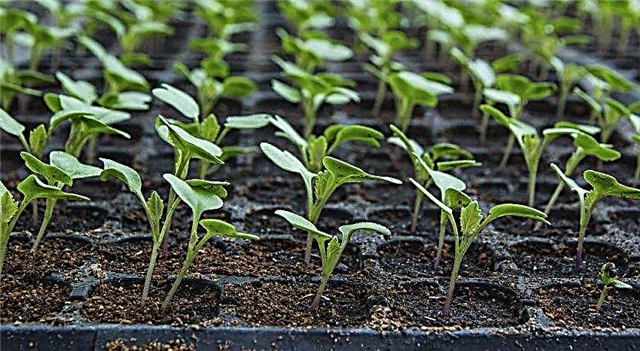
Site preparation
The site where this hybrid is planned to be planted has the following requirements:
- Good lighting.
- Sandy or loamy soil with non-acidic composition.
- Predecessors in the form of beans, peas, carrots, zucchini, pumpkins, onions, potatoes.
The site preparation process includes:Important! If this or other varieties of cabbage, turnip, rapeseed, mustard, turnip, horseradish and other plants of the cabbage family grew on the site, Megaton can be planted in this place no earlier than 3-4 years later.
- Autumn digging up the soil and making humus at the rate of 10 kg per 1 m².
- The application of lime with increased soil acidity at the rate of 0.5 kg per 1 m².
- Spring digging of the plot and fertilizing in the form of urea at the rate of 30 g per 1 m² and ash at the rate of 0.5 kg per 1 m².
- Digging holes every 45 cm, passing between rows of 60 cm.
- Fertilizing directly into the wells - 15 g of superphosphate in each.
- Watering - 0.5 l of water in each well.
Transplanting seedlings into the ground
The best time for planting in open ground lasts from the second decade of May to the end of the first decade of June. Seedlings at this point will be about 50 days. 1 planted planted in each well; planting depth - cotyledonous leaves. Planted seedlings are covered with foil for several days.

Plant care
Although Megaton is not a very demanding variety to care for, it is still necessary to remember the standard procedures that accompany the cultivation of cabbage:
- watering;
- top dressing;
- weeding;
- hilling.
We recommend reading about other varieties of cabbage:
Watering and feeding
Although Megaton can endure for several days without water, you should not forget about watering if you want cabbage leaves to maintain juiciness. The first watering is carried out after 3 days from planting and this interval is maintained for the next 14 days. At the same time, they consume 8 liters of water per 1 m² of area. After that, the amount of water is increased to 12 liters per 1 m², and the interval is up to 1 week. These numbers are focused on hot summers; in rainy days you need to monitor the degree of soil drying.
Water should not be cold, collect it in advance and leave to stand. So it will warm up to a temperature of + 18 ... + 23 ° C. Of all the methods for irrigation of leaves in small areas, it is preferable to use a watering can. On large plantations, buckets, sprinkling, or drip are used. For watering, choose the evening or morning hours. After the forks are formed, only the soil should be watered.
Two weeks before harvesting, forks are not watered, otherwise cracking cannot be avoided.Important! If for some reason the cabbage has been in a drought for a long time, do not water it abundantly right away, as the heads of cabbage can crack.
Fertilization should occur three times:
- 10-14 days after landing on the site, choosing one of the options: for 5 parts of cow manure, 1 part of water; 10 parts of bird manure - 1 part of water; 0.5% solution of ammonium nitrate. Consume 1 liter of fertilizer per vegetable.
- 2-3 weeks after that. Options: for 2 parts of superphosphate, 1 part of ammonium nitrate and potassium sulfate or nitrophosphate. Consume 40-60 g per 1 m².
- 2 weeks after the second, if it is obvious that the plants lack nutrients: for 1 part potassium sulfate, 2 parts superphosphate or wood ash. Consume 30 g per 1 vegetable.

Loosening and weeding
Weed weeding should be done as necessary, and loosening - after each watering and fertilizing.
Hilling bushes
Hobbing is necessary to protect the roots of plants and help them grow.
The procedure needs to be done twice:
- When from the moment of transplanting seedlings will be 20 days.
- When 10 days pass from the first procedure.
Pest and Disease Control
Not only poor care, but also diseases or pests can destroy the crop.
The hybrid is resistant to many cabbage diseases, but can suffer from such pests:Important! It is not recommended to use chemical pest control agents on the forged cabbage forks, otherwise the chemistry may remain in the middle of the vegetable and lead to poisoning.
- Cruciferous flea - a small beetle eating leaves of young plants. For the fight using solutions of "Karate", "Actellica", "Anabazin-sulfate", garlic water. For prevention, the leaves are sprayed with water, and the soil is sprinkled with ash.
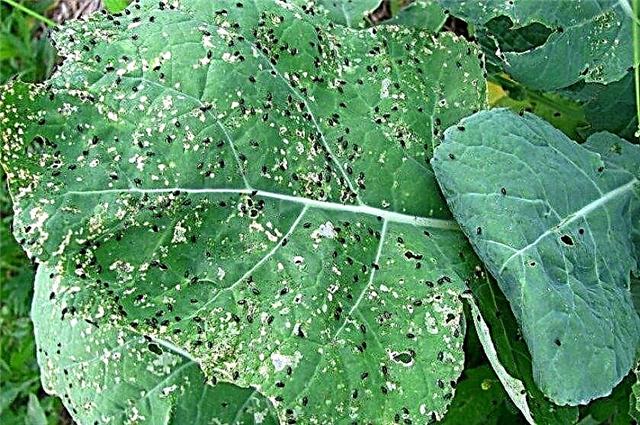
- Aphid - barely noticeable insects that suck the juice from the leaves. To combat use solutions of "Actellica", "Intavira", infusions of wormwood, nettle and chamomile, a mixture of ash with liquid soap and water. For prevention, irrigation is used.

- Cabbage White - a butterfly of white color, the caterpillars of which gnaw leaves and forks of cabbage. For struggle use solutions of Fitoverm, Intavira, collect them manually. For prevention, it is recommended to periodically inspect the leaves.

- Cabbage Moth - a gray-brown butterfly, whose caterpillars are able to completely destroy the crop. For the fight using "Detox", "Fitoverm", tobacco tincture. For prevention, you need to carefully remove the remains of plants in the autumn, dig, weed the weeds in the process of growing cabbage.
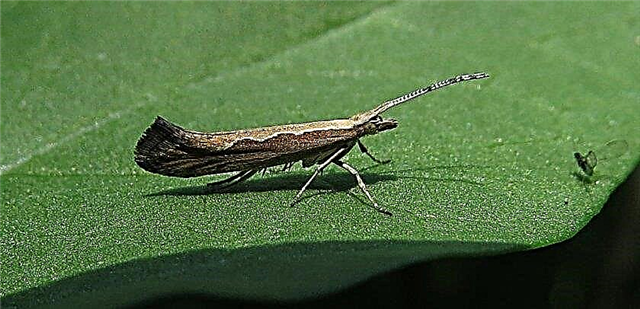
- Butterfly scoop - its color is similar to the coloring of an owl, lays caterpillars devouring leaves. For the struggle they use “Borey”, “Pirineks”, traps with roaming kvass or molasses, trichograms, and bracons. For prevention, weeds should be weeded.

- Thrips - small oblong insects sucking juice from leaves. For the fight, they use Karbofos, Fitoverm, and tincture of tobacco. For prevention, irrigate plants with water.
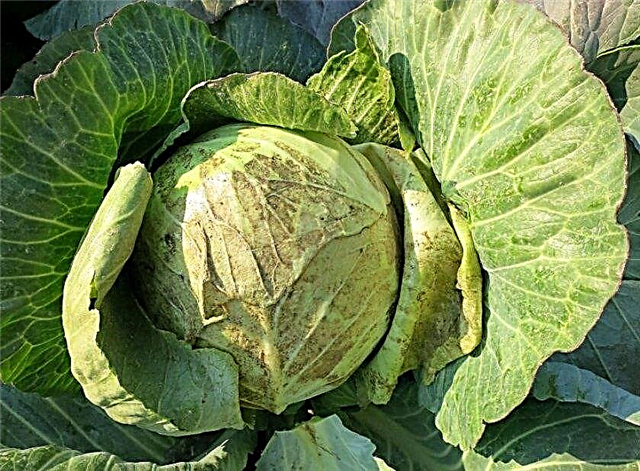
- Crucifer bug - A large, brightly colored beetle with a pattern on its back that feeds on leaf juice. For the fight using insecticides, soap solution, collect them manually. For prevention, it is recommended to plant seedlings early to be stronger.

- Cabbage fly - the larvae of this insect (small white worms) feed on roots, lower leaves, stems; the lower leaves turn gray-violet, the roots rot. For the fight using insecticides, saline, ammonia. For prevention, they spud plants, sprinkled with tobacco dust in half with ash, watered with tincture of bay leaf.

- Medvedka - an insect resembling a bear in miniature destroys the stems and roots of cabbage. For the fight, they use Medvetoks, dung traps.
Did you know? The bear is characterized as the best bait when catfish or pike are caught.
For prevention, marigolds are planted nearby, fed with bird droppings, refuse fresh manure in top dressing.

Features of harvesting and storage of crops
Megaton is collected from the garden in the fall, in late September - early October. It is recommended that the air temperature drops to + 2 ° C. Each cabbage is dug up with roots, left to dry for a day, then the roots are chopped off, leaving a 2 cm long stalk and 2 leaves on a fork.
More loose forks are used for fermentation, and denser ones are kept fresh. On such forks there should be no cracks or traces of rot. In order for Megaton to be well preserved, the temperature in the room should not be higher than + 4 ° C. As a litter you can use dry straw. Can be put in wooden crates.
Video: Harvest of cabbage Megaton
Harvested vegetables can be used to prepare salads, first or second courses, but their taste will be fully revealed only 1-2 months after storage.
So, a hybrid cabbage variety Megaton has many advantages over others, it is taste, the ability to ferment, resistance to disease and transport, and others. To get a good harvest, it is better to use the seedling method, do not forget to properly care for seedlings and adult plants. When you harvest, let the cabbage ripen - so its taste will improve significantly.
Network user reviews
ADVANTAGES: Heads of cabbage do not burst.
DISADVANTAGES: No
"Cabbage Megaton F1" is a very good cabbage. Heads of cabbage are large, dense do not burst. I have been buying seeds of this cabbage for 7 years. Since I live in Siberia, not all varieties are suitable for cultivation in our climatic conditions, and Megaton is great. It is frost-resistant, mid-season. I plant it in late March, in early April for seedlings, and in late April I plant it on the ground, only for the first time I cover it with acrylic. You have to tinker a little, but already in early August, cabbage pleases with its huge heads. It tastes very good, is suitable for salads, and for fermentation, and for pies. My children love to eat it fresh. Buy Megaton F1 cabbage and you already will be her constant fan.













